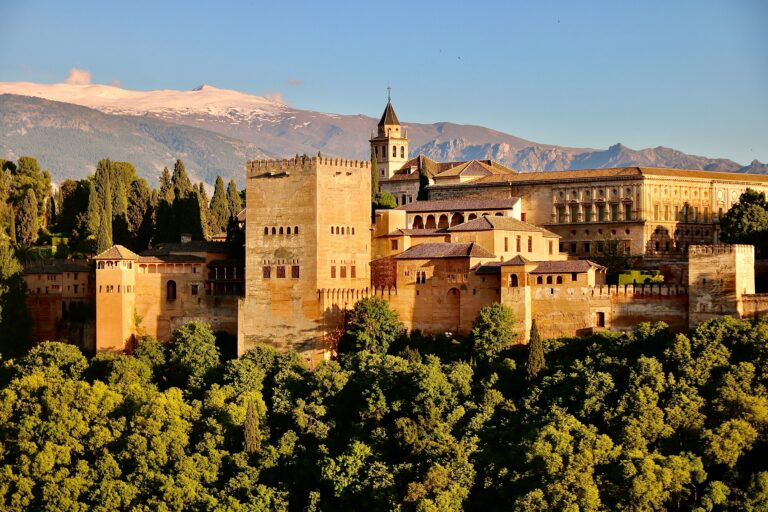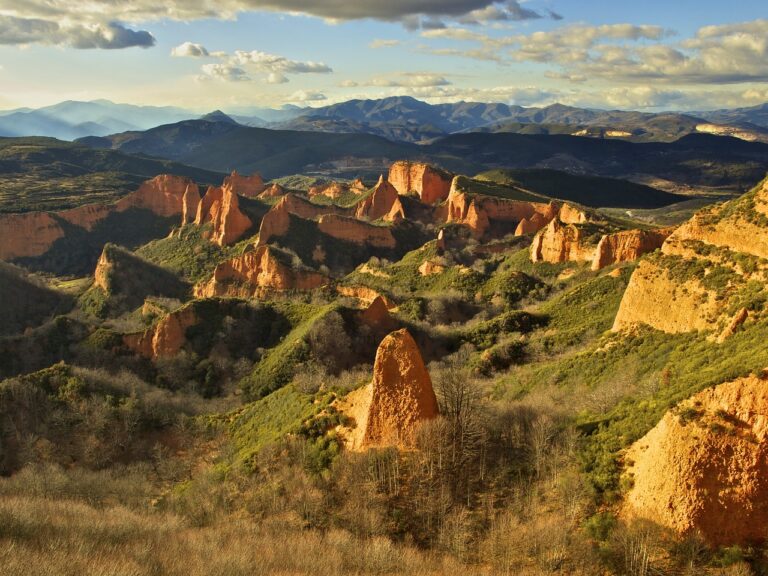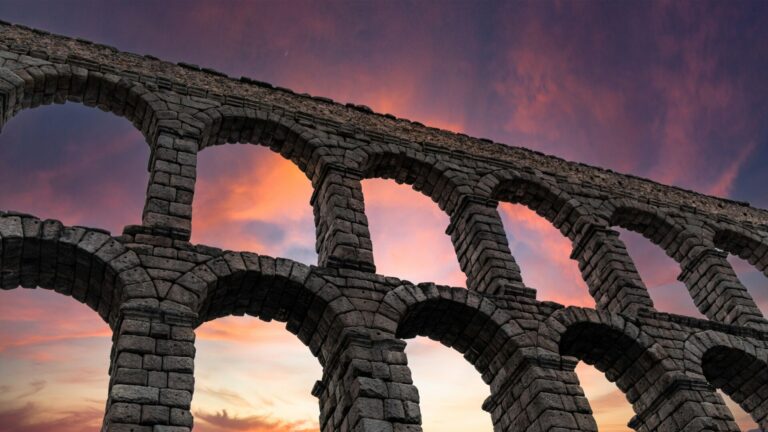Exploring Spain’s UNESCO World Heritage Sites
Exploring Spain’s UNESCO World Heritage Sites
Did you know Spain is home to 49 UNESCO World Heritage Sites? That’s right, folks! This country ranks third in the world for these cultural treasures, right behind Italy and China. Talk about punching above its weight!
Now, I’ll be honest – when I first heard about UNESCO World Heritage Sites, I thought they were just a fancy label for old buildings. Boy, was I wrong! These sites are like the Oscars of the heritage world, recognizing places of “outstanding universal value.” Trust me, it’s a big deal.
My journey through Spain’s UNESCO sites has been nothing short of mind-blowing. Spain’s got everything from jaw-dropping Roman aqueducts to Gaudí’s creations that look like they’ve sprung from a fever dream. And let’s not forget about the natural wonders – we’re talking national parks that’ll make you feel like you’ve stepped into a National Geographic documentary.
But here’s the kicker – it’s not just about ancient history or pretty landscapes. These sites tell the story of Spain, from its earliest inhabitants to the cultural melting pot it is today. It’s like a real-life time machine, minus the DeLorean and the crazy scientist hair.
I remember standing in the middle of the Alhambra in Granada, surrounded by intricate Islamic architecture, and thinking, “How on earth did they build this without modern tools?” It’s moments like these that make you realize just how rich and diverse Spain’s heritage really is.
So, buckle up, amigos! We’re about to embark on a whirlwind tour of Spain’s UNESCO World Heritage Sites. From the sun-baked plains of La Mancha to the rugged coastlines of the Balearic Islands, we’ll explore the very best of what Spain has to offer. Who knows? By the end of this, you might just be booking your next flight to Barcelona or Seville. Let’s dive in!
Understanding Spain´s UNESCO World Heritage Sites
Okay, let’s get real for a second. When I first heard about UNESCO World Heritage Sites, I thought it was just some fancy title that tourism boards slapped on old buildings to attract more visitors. Man, was I off the mark!
UNESCO World Heritage Sites are like the crème de la crème of global landmarks. Think of them as the Avengers of the heritage world – each one exceptional in its own right, but together, they’re unbeatable. These sites are chosen based on their “outstanding universal value,” which is a fancy way of saying they’re so darn special that they belong to all of humanity.
Now, here’s where it gets interesting. To make the cut, a site needs to tick at least one of ten criteria. These range from “masterpiece of human creative genius” (I’m looking at you, Sagrada Família) to “exceptional natural beauty” (hello, Teide National Park!). It’s like the world’s most exclusive club, and Spain’s got VIP access.
But here’s the thing – being on this list isn’t just about bragging rights. It comes with a huge responsibility. Countries have to protect and preserve these sites for future generations. It’s like being handed the keys to a priceless classic car – you can’t just let it rust in the garage!
Spain joined the UNESCO party back in 1982, and boy, have they been busy since then! From the sun-soaked streets of Seville to the windswept peaks of the Pyrenees, Spain’s UNESCO sites showcase the country’s incredible diversity. Trust me, once you start exploring these places, you’ll never look at Spain the same way again!
Cultural UNESCO World Heritage Sites in Spain
Hold onto your sombreros, folks, because we’re about to dive into the cultural treasure trove that is Spain’s UNESCO World Heritage Sites. These places aren’t just pretty facades – they’re living, breathing time capsules that’ll transport you through centuries of Spanish history faster than you can say “siesta.”
Let’s kick things off with the Alhambra in Granada. Picture this: intricate Islamic architecture, lush gardens, and views that’ll make your Instagram followers weep with envy. I remember wandering through the Nasrid Palaces, my jaw practically scraping the floor, thinking, “How did they create something this beautiful without power tools?” It’s a mystery that’ll haunt me forever.
Next up, we’ve got Toledo, the city that time forgot. Seriously, walking through its narrow, winding streets feels like you’ve stumbled onto a medieval movie set. Christians, Muslims, and Jews all left their mark here, creating a mishmash of cultures that’ll make your head spin (in the best way possible).
Now, let’s talk Gaudí. This guy’s works in Barcelona are so out-there, you’d think he was designing buildings for aliens. The Sagrada Família? It’s been under construction for over 140 years and it’s STILL not finished. Talk about a long-term project! But trust me, one look at those twisting spires and you’ll understand why it’s worth the wait.
Salamanca and Santiago de Compostela are like the dynamic duo of Spanish university towns. Salamanca’s golden-hued buildings will have you reaching for your sunglasses, while Santiago’s old town is the finish line for thousands of pilgrims walking the Camino de Santiago each year. I attempted the Camino once… let’s just say I have a newfound respect for medieval pilgrims and their comfy walking shoes.

Natural UNESCO World Heritage Sites in Spain
Alright, nature lovers, this one’s for you! Spain isn’t just about stunning architecture and mouthwatering tapas (although those are pretty great too). It’s also home to some drop-dead gorgeous natural UNESCO World Heritage Sites that’ll have you packing your hiking boots faster than you can say “biodiversidad.”
First up, we’ve got Doñana National Park. This place is like Mother Nature’s own private zoo. We’re talking marshlands, sand dunes, and more bird species than you can shake a pair of binoculars at. I once spent a day here trying to spot the elusive Iberian lynx. Spoiler alert: I didn’t see one, but I did see about a million flamingos. It was like a sea of pink feathers!
Next, let’s jet off to the Canary Islands and check out Teide National Park on Tenerife. Picture this: you’re standing on top of Spain’s highest peak, surrounded by otherworldly volcanic landscapes that look like they belong on Mars. I remember huffing and puffing my way up Mount Teide, cursing every step… until I saw the view from the top. Let me tell you, it was worth every blister!
Last but not least, we’ve got Garajonay National Park on La Gomera. This place is like stepping into a fairy tale forest. We’re talking ancient laurel trees dripping with moss, misty paths, and an eerie silence that’ll make you wonder if you’ve accidentally wandered onto the set of “Lord of the Rings.” Just watch out for the giant lizards – they’re harmless, but boy, can they give you a scare!
These natural wonders are living proof that Spain isn’t just about siestas and fiestas. It’s a country with incredible biodiversity, from wetlands teeming with wildlife to volcanic landscapes that’ll blow your mind.

Mixed UNESCO World Heritage Sites in Spain
Okay, folks, it’s time to talk about the rebels of the UNESCO world – the mixed sites. These bad boys couldn’t decide whether they wanted to be cultural or natural sites, so they said, “¿Por qué no los dos?” (Why not both?) And let me tell you, they’re the best of both worlds!
First up, we’ve got Ibiza. Now, I know what you’re thinking – isn’t that just a party island? Well, hold onto your glow sticks, because Ibiza’s got a lot more going on than just world-class DJs and foam parties. This island is a biodiversity hotspot, with crystal-clear waters home to dense prairies of oceanic Posidonia (that’s seagrass to us non-scientists). And let’s not forget the ancient Phoenician ruins of Sa Caleta and the fortified Old Town. It’s like Mother Nature and Indiana Jones teamed up to create the ultimate island getaway!
Next, we’re heading to the Pyrénées – Mont Perdu. This one’s so awesome, it’s shared between Spain and France (talk about international cooperation!). Picture this: soaring mountain peaks, deep canyons, and picturesque villages that look like they’re straight out of a postcard. I remember hiking here and stumbling upon a group of wild horses. For a moment, I thought I’d time-traveled back to when cowboys roamed these parts!
What makes these mixed sites so special is how they showcase the intricate dance between human culture and the natural world. It’s like watching a perfectly choreographed tango between architecture and landscape. In Ibiza, you can explore ancient ruins in the morning and snorkel through underwater prairies in the afternoon. At Pyrénées – Mont Perdu, you can marvel at centuries-old shepherding traditions one minute and gape at glacial cirques the next.
Lesser-Known UNESCO Sites Worth Exploring
Alright, intrepid explorers, it’s time to venture off the beaten path and discover some of Spain’s hidden UNESCO gems. These sites might not have the fame of the Alhambra or the crowds of Barcelona, but trust me, they’re worth seeking out. It’s like finding a secret menu at your favorite restaurant – you’ll feel like you’re in on something special!
First up, we’ve got Las Médulas. Picture this: a landscape that looks like it’s been clawed by giants, with red-tinged hills and deep gullies. No, it’s not Mars – it’s actually the remnants of the largest open-cast gold mine in the entire Roman Empire! I remember standing at the viewpoint, my mind blown by the fact that this alien landscape was man-made. It’s like ancient Romans decided to play Minecraft in real life!
Next, let’s talk about the Rock Art of the Mediterranean Basin on the Iberian Peninsula. Okay, I know that’s a mouthful, but bear with me. We’re talking about prehistoric art galleries scattered across eastern Spain. These aren’t your typical cave paintings – we’ve got scenes of hunting, dancing, and everyday life that give us a peek into the world of our ancestors. It’s like Instagram Stories, but from 8000 years ago!
Last but not least, we’ve got the University and Historic Precinct of Alcalá de Henares. This place is a big deal – it’s the first planned university city in the world and the birthplace of Miguel de Cervantes, the guy who wrote Don Quixote. Walking through its streets is like stepping into a time machine. I half expected to see students in medieval robes rushing to their alchemy classes!
What I love about these lesser-known sites is the sense of discovery you get. There’s something special about exploring a place that isn’t crawling with tourists.

Planning Your Visit to Spain’s UNESCO Sites
Alright, fellow UNESCO enthusiasts, it’s time to get down to brass tacks. Planning a trip to see Spain’s World Heritage Sites can feel as daunting as deciphering the blueprints of the Sagrada Família. But fear not! I’ve made every mistake in the book so you don’t have to. Here’s the insider scoop on making your UNESCO adventure as smooth as a well-aged Rioja.
First things first: timing is everything. Trust me, you do NOT want to be battling hordes of tourists under the scorching Spanish sun. I learned this the hard way when I visited the Alhambra in August. Let’s just say I came for the Moorish architecture and left looking like a sweaty, overcooked paella. Generally, spring (April-May) and fall (September-October) are your best bets for comfortable weather and manageable crowds.
Now, let’s talk transportation. Spain’s got a pretty nifty train system called Renfe, which can zip you between major cities faster than you can say “una cerveza, por favor.” But for those off-the-beaten-path sites? You might want to consider renting a car.
When it comes to guided tours versus self-guided exploration, it really depends on your style. If you’re the type who likes to dive deep into history and doesn’t mind someone else handling the logistics, guided tours can be great. Plus, you often get to skip the lines – which, trust me, is worth its weight in gold at popular sites like the Prado Museum.
On the other hand, if you’re more of a “wander aimlessly and see what you discover” kind of traveler (guilty as charged), self-guided tours can be incredibly rewarding. Just make sure you do your homework beforehand. There’s nothing worse than realizing you missed something amazing because you didn’t know it was there.
Preserving Spain’s UNESCO Heritage: Challenges and Initiatives
Alright, folks, it’s time to get a little serious. I know, I know – talking about preservation isn’t as exciting as planning your next tapas crawl. But stick with me, because this stuff is important, and dare I say it, pretty darn interesting too!
Let’s face it – Spain’s UNESCO sites are like that vintage guitar you inherited from your cool uncle. They’re awesome, everyone wants to see them, but they’re also kind of fragile and need some TLC. The biggest challenge? Balancing preservation with the hordes of eager tourists (guilty as charged) who want to experience these wonders.
Take the Alhambra, for example. This place is so popular that they’ve had to limit the number of daily visitors. I remember showing up without a reservation once, thinking I’d just waltz right in. Ha! I ended up spending my day in Granada eating my weight in tapas instead. (Silver lining, I guess?)
The good news? Spain isn’t taking these challenges lying down. They’re like that overachieving student in class who not only does the homework but also extra credit. Many sites have implemented smart tourism strategies, using technology to monitor and manage visitor impact. Some places even use virtual reality to offer “visits” to fragile areas that can’t handle real foot traffic. It’s like being able to touch the paintings in a museum, but without the angry security guard yelling at you!
But here’s where you and I come in, fellow travelers. We can play a part in preserving these amazing sites too. It’s simple stuff, really – stick to marked paths, don’t touch things you’re not supposed to, and for the love of all that is holy, don’t try to carve your initials into ancient monuments. (Yes, I’ve seen people try. No, it didn’t end well for them.)

Conclusion
We’ve just taken a whirlwind tour through Spain’s UNESCO World Heritage Sites, and what a journey it’s been! From the sun-baked streets of Toledo to the misty forests of Garajonay, we’ve covered more ground than a bull in a china shop. (Speaking of which, did I mention that the Running of the Bulls in Pamplona isn’t a UNESCO site? Probably for the best – I don’t think “death-defying madness” is on UNESCO’s criteria list.)
Let me tell you, writing this article has been like trying to fit a paella pan into a carry-on luggage – there’s just so much to pack in! But if there’s one thing I hope you’ve taken away from this UNESCO extravaganza, it’s that Spain is so much more than just sangria and siestas. It’s a country where every stone has a story, every landscape is a masterpiece, and every city is a time machine.
From the mind-bending architecture of Gaudí to the prehistoric art that makes your kid’s fridge drawings look amateur, Spain’s UNESCO sites offer a buffet of experiences for every type of traveler.
So, what are you waiting for? Start planning your Spanish UNESCO adventure! Whether you’re dreaming of standing atop the volcanic peak of Mount Teide, getting lost in the labyrinthine streets of Toledo, or trying to spot flamingos in Doñana National Park (pro tip: they’re the pink ones), there’s a UNESCO site with your name on it.
And hey, while you’re out there exploring, take a moment to appreciate the efforts going into preserving these incredible sites. Maybe toss a few euros into a restoration fund, or at least resist the urge to take that “authentic” tile from the Alhambra as a souvenir. Future generations of travelers will thank you.
